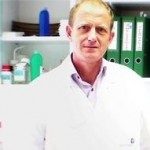Présentation
Detailed objectives of the research program
1) How lyssavirus infection moves in both space and in time and the role played by ecological factors in the dispersal of lyssaviruses in bats and dogs. The development of epidemiological models to study viral dynamics in bat colonies and in dog populations together with comprehensive viral phylodynamics studies using the combination of phylogenetic and coalescent approaches to connect the historical process of dog and bat lyssavirus evolution with different epidemiological parameters of interest should lead to a better understanding of virus and host evolutionary dynamics. The knowledge of how infection moves in space and in time should provide an accurate assessment of the health risks associated with lyssaviruses and help to design appropriate strategies for rabies control and elimination.
2) Key aspects of lyssavirus evolution that may impact cross-species transmission. Our final aim is to elucidate the patterns and variation of within-host viral diversification according to host species using field isolates and experimental passages in target animals and to understand the role of virus evolution during adaptation. This project is based on in depth analysis of within-host viral diversification using NGS.
3) How the viral matrix and phosphoprotein modulates the viral-host interplay and in particular the innate immune response. By analysing the results of the interplay between host cells and lyssaviruses, we should obtain key information about how molecular evolution shapes the capacity of the different viral proteins to modulate cellular transduction pathways and innate immunity in particular.
4) To provide a framework for future drug development (structural insights into molecular targets for inhibitors and identification of early leads against the replication complex of lyssavirus) and in particular analyse how mutations in the phosphoprotein can modulate the formation and the function of the replication complex. Targeting the enzyme activities involved in the replication of Mononegavirales using a structure-based design approach should ultimately be exploitable in the derivation of novel ways of intervening in viral replication.
5) To describe the epidemiology and aetiologies of acute human encephalitis in France and in Africa and identify unknown or unusual viral agents using next generation sequencing.
Activities directly in relation with public health
The unit is involved in the development and implementation of standardized biological diagnostics, in the development of a pathogen collection, in training French and foreign virologists working in the field of rabies control and in writing reviews to inform biologists and physicians.
It has been designated by the Ministry of health as NRC Rabies (period 2012-2016) and by WHO as WHOCC Rabies (period 2013-2017). The NRC-Rabies is involved in the control of human rabies in France. It is responsible for the laboratory diagnosis of every suspected human case (more than 10 suspicions per year) and of any animal that could possibly have transmitted rabies to humans (in average 1350 suspicions per year). Metropolitan France is free of rabies in non-flying animals. However, illegal importations of domestic animals not protected against rabies are still recorded (see report of the NRC Rabies) and lyssavirus infection of bats are recorded every year..This underlignes the need for human and veterinary surveillance of rabies for an appropriate implementation of prevention and control measures.
We have also reinforced our efforts to fulfil the general requirements of the European Norm entitled “General requirements for the competence of testing and calibration laboratories” (ISO/CEI 17025: 2005). We have been accreditated in 2005 and renewed in 2010 for rabies diagnosis in animal health section. In 2013, we had our initial audit concerning the European Norm entitled « Medical laboratories “Particular requirements for quality and competence” (ISO/CEI 15189: 2012).
The epidemiology of rabies in Europe and in particular in France has changed over the recent years. Therefore there is a need to reinvestigate the risks associated with rabies and above all to analyze the medical cost of the human prophylaxis against rabies in France in relation to this risk. To this aim, the medical economics of the prevention of rabies in humans in France is evaluated to propose new guidelines. These studies are relying on the exhaustive database compiled by the NRC Rabies, which describes the epidemiological data of all the postexposure prophylaxis given in France.









